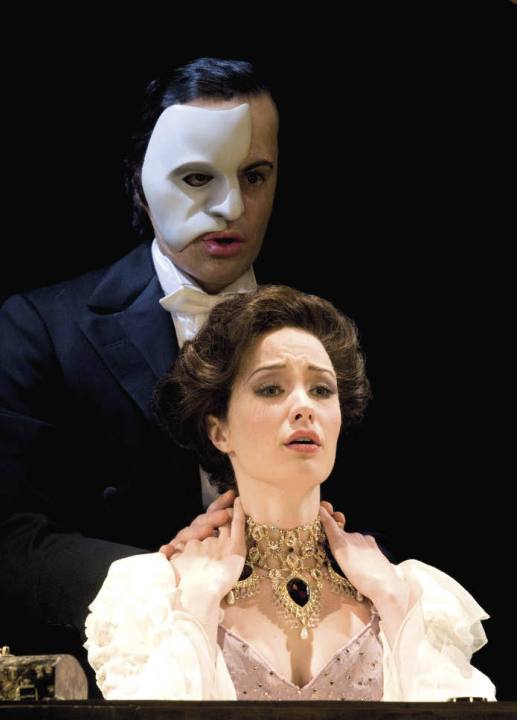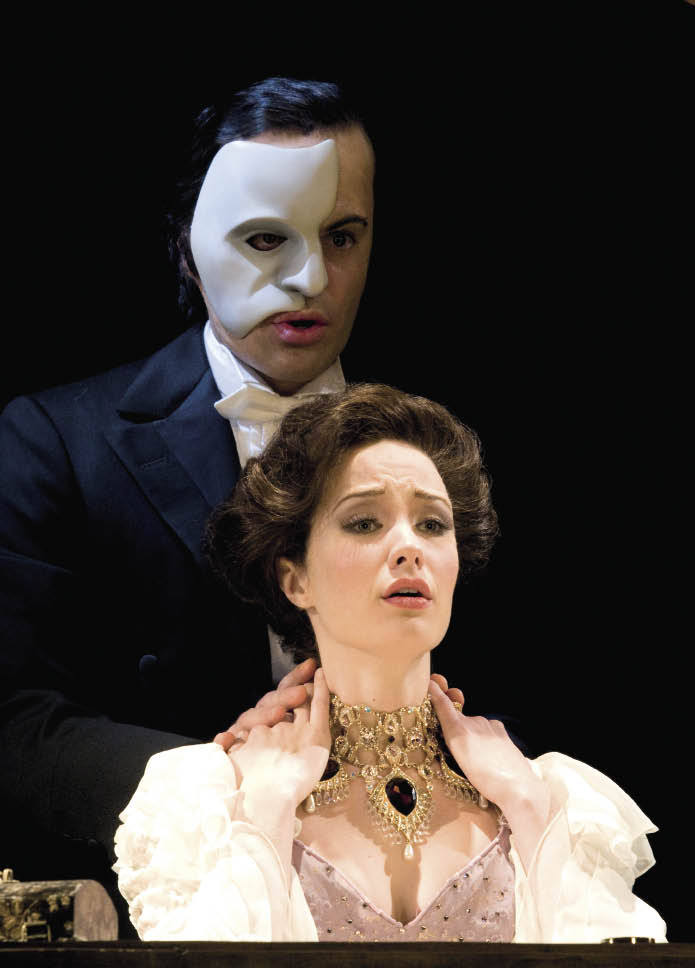Love Never Dies
Adelphi, booking to October
The Fever Chart
Trafalgar Studio 2, booking to 3 April
Love Never Dies has been bugging Andrew Lloyd Webber since 1990. He felt that the Phantom of the Opera needed a sequel and he’s been working on it for roughly three times as long as it took Tolstoy to write War and Peace. The script assumes no knowledge of the earlier show. Christine, an unhappily married French diva, is offered a singing contract by a mysterious maestro who runs a theatre in Coney Island. She arrives with her husband and son and discovers that the maestro is none other than the obsessed Phantom himself. The ensuing love triangle is marred by the bizarre psychological distortions of the characters.
Christine is a whirlwind of professional ambition and romantic frustration. Her husband is a bankrupt aristocratic drunk with beautiful suits and an ugly temper, and the Phantom is a transatlantic stalker with a half-formed cranium. Wisely, he sports a Samsonite skull-panel which keeps his brain from oozing down the side of his face. Sometimes he takes it off to show us his spag-bol cerebellum. These three Gothic caricatures circle each other for an hour or so until a surprise revelation about Christine’s son sends the story lurching in a fresh direction. But the good news turns out to be bad news for the drama as it removes any obstacle to the union of Christine and her phrenologically challenged suitor. So a final deadly surprise is introduced involving a stray bullet, a lot of stage ketchup and a swooping aria belted out at top volume by a performer bleeding to death on the floorboards.
The botched storyline is probably the show’s worst feature. The design is better although many of its details are poorly integrated. The Phantom’s lair looks like a heavy-metal beach house with a big silvery organ which plays thumping guitar solos. To one side there’s a shower cubicle harbouring the Phantom’s life-size model of Christine. And a trolley full of skulls gets trundled around by a magical skeleton with human legs. These effects are perfectly good but they’d work equally well in a circus or a toy museum. Taken together they add to the confusion of this muddled, genre-straddling show.
Occasionally, there’s a touch of uplifting beauty. The New York docks are superbly gloomy. The silhouettes of horses prancing on curtains of dry ice look amazing and some of the art-nouveau interiors are exquisitely done. Without doubt, the show’s highlight is the title song performed by the unhappily named Sierra Boggess. Flanked by her warring rivals, she appears on stage illuminated in the converging radiance of two downturned spotlights — like the targeting mechanism on the Dambusters — and when she spreads out her slender arms she gives the big anthem everything she’s got. Ms Bogess is a beauty with a hummingbird’s delicate physique, and in the higher registers her voice has an extraordinary tenderness and a tear-jerking frailty. She exudes star quality too, something this mishmash of a show definitely needs.
The Phantom, played by Ramin Karimloo, is mellifluously competent but he has difficulty bringing his character alive with a plastic ashtray obscuring half his head. The brilliant comic actor Joseph Millson can’t find any emotional engagement with Christine’s rotter of a husband. And there are no jokes anywhere even though Ben Elton is credited as a co-author. What a pity Lloyd Webber no longer collaborates with Tim Rice. All the maverick wit and insouciant energies have vanished from his work and been replaced by stifling bombast. That said, I doubt if this show will bomb. When Lloyd Webber’s curtain rises, reason sleeps. Miraculous and inscrutable forces propel the audience into raptures. On the night I went it got a three-minute standing ovation.
No chance of that at The Fever Chart. These three brief playlets set out to offer a domestic take on the conflicts of the Middle East. Rarely has such a noble intention produced such barking-mad results. Here are the plot lines in ascending order of whimsicality. An officer of the Iraqi Republican Guard impersonates doves at a convention of pigeon-fanciers. An assassinated IDF soldier wakes up in paradise (which also happens to be Rafah zoo) and learns about his death from a wise Arab lady. An asthmatic Israeli nurse receives new lungs from a dead Arab whose father visits her in hospital and gropes her chest hoping to re-establish contact with his son. Sound good? Make haste to the Trafalgar Studio 2. This cosy little downstairs space can be a valuable testing ground for new talent. It can also tempt producers in search of an easy way to attach ‘West End transfer’ to their list of theatrical achievements. Perhaps that’s what happened here.








Comments